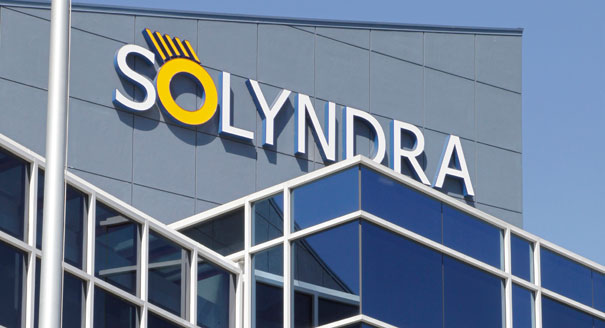One thing I get tired of reading is the abuse piled on the Obama Administration by the Republicans (really, more specifically the Tea Party wing) about how the DoE loan guarantee extended to alternative energy companies was wasteful, and little more than political fluffery to reward a loyal demographic.
Alas, this story has been debunked over and over, yet the response “What about Solyndra?” is their rallying cry.
So, what about Solyndra? It was a startup that was taking a unique view of how to build efficient solar power modules. Using a thin film process, known as CIGS, to create efficiency somewhere between the then principal technologies, polycrystaline silicon, and monocrystalline silicon cells. PolySi cells were 15 – 18% efficient, and monoSi cells were 20 – 22%.
CIGS was promising to be commercially produced near 20%, and that was enough to make it a favorite technology.
But if crystalline silicon modules were so easy to make, why seek alternatives? A little history lesson is in store. If you remember back to 2007/2008 you might remember that the cost of energy was rising dramatically. Us Americans noticed this mainly in the cost of the gasoline we put into our cars, but across the country, we were flirting with $4 a gallon gas. Diesel was even higher, getting close to $5 a gallon. Oil was rising up to $120 a barrel, and expected to go higher.
Suddenly, the push for renewable energy was on. Lead by Europe, but also a strong push in the US, the pressure to increase the manufacturing of modules was immense. The long time dominant player, Japan’s Sharp, was overtaken in 2008 by Germany’s Qcells, and the race was on.
What happened though was the demand for the raw materials outpaced the production. Silicon ingots, used to make the individual cells, went from $15/Kg up to a dizzying $600/Kg. Supply was tight, and the cost of making modules shot through the roof.
Of course, there are plenty of other types of solar cells, and a US Government lab called NREL had been the focal point of a lot of research. The sudden momentum to find a suitable replacement for Si based solar sells was on.
One promising technology was CIGS, or Copper, Indium Gallium di-Selenide thin film. Using a thin film, it was a focal point of a lot of engineering efforts to productize. The company I worked for at the time, Veeco Instruments, made deposition and sources that were commonly used to fabricate these cells.
Almost overnight companies popped up to rush this to market, with the high price of Silicon in the background as the justification. By the end of 2008, I remember a list of 100+ companies, with 10 or so well funded to commercialize the technology. Solyndra was one of these.
Their claim to fame was to create the thin film inside a glass tube, and improve the efficiency by capturing more photons and thus more energy.
(There was also a company that was working to create a CIGS “ink” that could be printed to create solar cells. Lots of wild things were being worked on)
As part of the ARRA, one of the programs was the Department of Energy offering loan guarantees to promising companies in the renewable energy space. Of the 120 loans, most of the companies easily repaid, and were success, but the Tea Party loves to point at Solyndra. Based in San Jose, a “liberal” mecca, adds to their disdain that this was crony capitalism, and political payback for helping “that man” get elected.
But, if you look at the dynamics as to why Solyndra (and indeed almost all of the thin film PV makers) failed, you have to look at the economics of silicon.
When Silicon ingots went from the teens, to $600/Kg, the shortage inspired the foundries who knew how to make them to ramp up production. Furnaces were built, refining capacity was increased, as these companies had dollar signs (more appropriately Renminbi signs) in their eyes. By 2011, capacity was coming online that drove a huge increase in supply of both poly and mono crystalline silicon ingots. Anybody who didn’t see this coming was an idiot. Electronic grade silicon can be refined from beach sand, something that is not in short supply by any stretch of the imagination.
And once the supplies came online, the price of bulk silicon dropped like a stone, and all the thin film makers suffered, went belly up, or re-invented themselves. Solyndra was one of the losers.
No government conspiracy. Not really that wasteful (the other loan guarantees by and large were paid off, making this one of the most successful investments of Government funds). But, read Breitbart, or Infowars, and hoo-boy, the bug-nut insanity comes out of the woodwork. Did they spend extravagantly? Probably, but no more so than many startups who find themselves flush with investor cash. But was it as bad as Newsmax says? No.
One day, I will tell the story of the other thin film technology – amorphous silicon – as it is an illuminating tale in itself.
